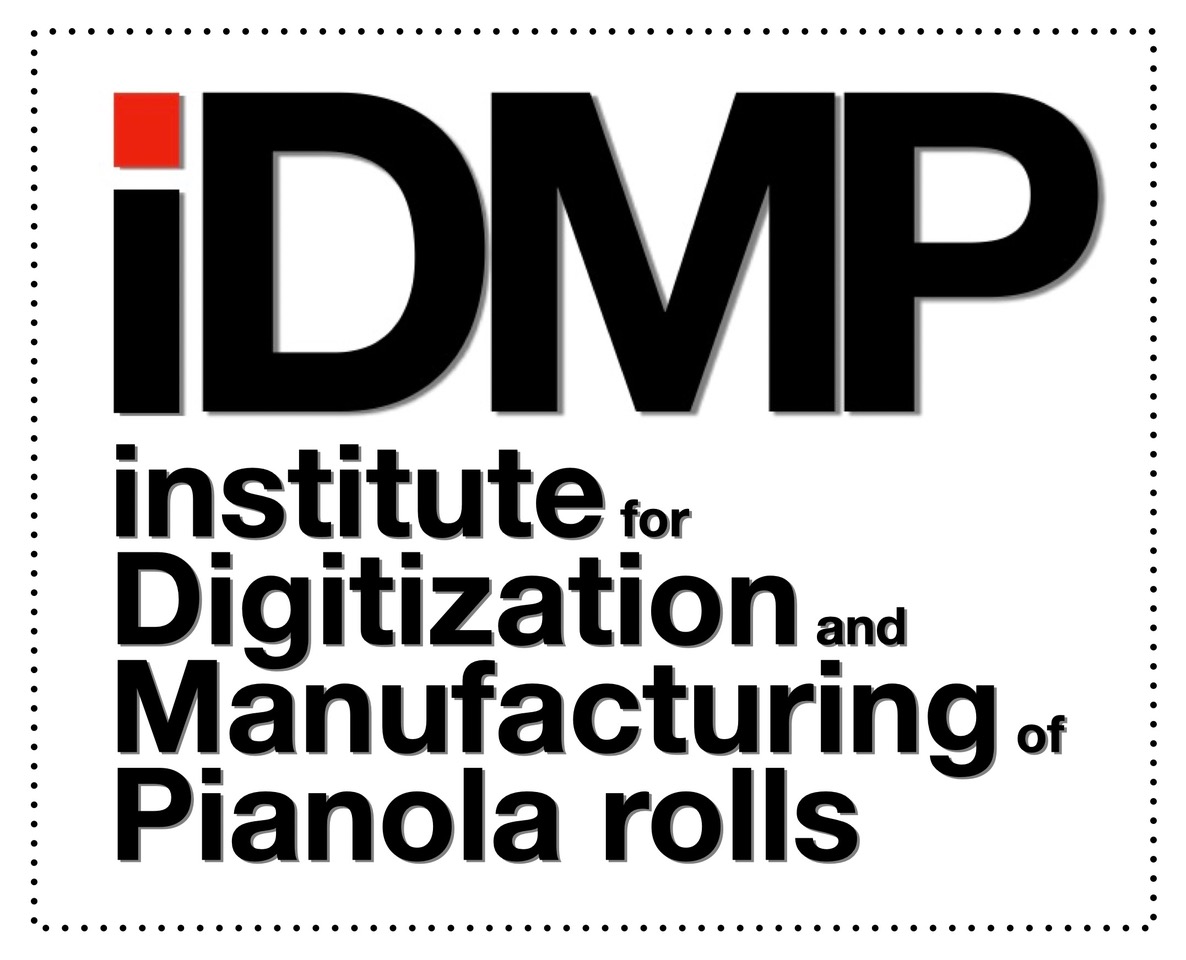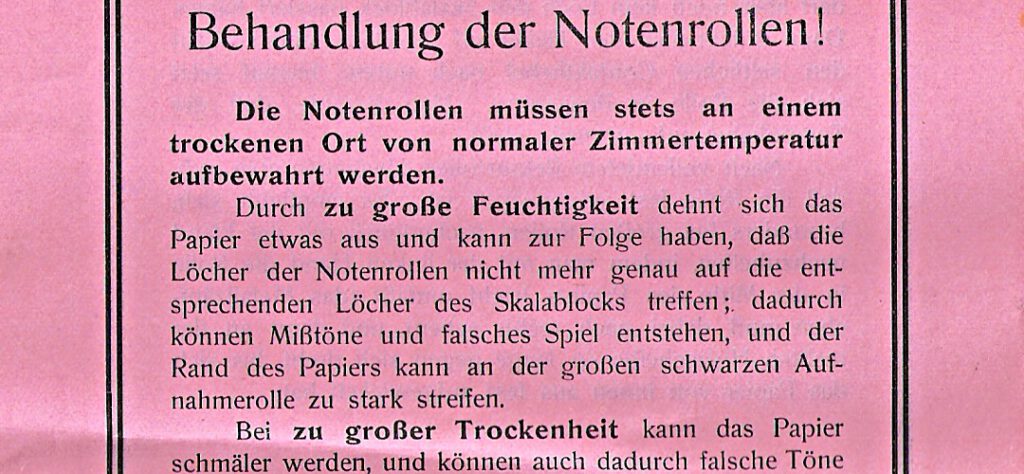Even if the music rolls, which can be over 100 years old, are often still in good condition, many rolls have minor or major defects simply due to repeated use. In the case of minor defects, the music rolls can be repaired with reasonable effort. The hook is often torn off. Repair kits are available for this, consisting of a new hook and an adhesive triangle for the start of the roll. If the music roll is torn, it can be repaired with a special repair tape from the book restoration department (e.g. filmoplast P from Neschen). Never use standard adhesive tape, as this will damage the paper, is not flexible enough and will shrink over time, causing irreparable damage to the roll. Once a music roll has been repaired, however, it should be treated with caution, as further defects usually occur during playback.
At Stanford University (USA), defective music rolls are carefully repaired for digitisation. Here is a report..
If the music roll shows severe deformations or tears on the sides, it can no longer be used sensibly, as the track control cannot work properly and the roll keeps running. This cannot be easily repaired. The same applies if there are larger cracks or deformations in the course of the perforations. In such cases, it is advisable to scan the roll and have it punched again. Even badly damaged music rolls can be scanned and preserved with the appropriate effort. If a flank of a music roll is missing, this can also be replaced on most types - QRS offers a repair set for its 88 mm music rolls (QRS Cat #46002).
Particularly robust and durable paper was used for the music rolls at the time. Over the decades, this paper has also aged, occasionally stored too damp and generally dried out considerably. This results in shrinkage and distortion, which prevents an error-free or faithful reproduction. The reel runs off the track several times and the piece sounds unstable. In such cases, it is again advisable to have a copy made, as errors and inaccuracies can also be worked out in the course of scanning.
Then as now, correct roll storage and handling avoids the need for repairs. Even with the best storage, a roller will no longer be perfectly usable after 100 years. For regular use, it is therefore advisable to use high-quality new rolls.


